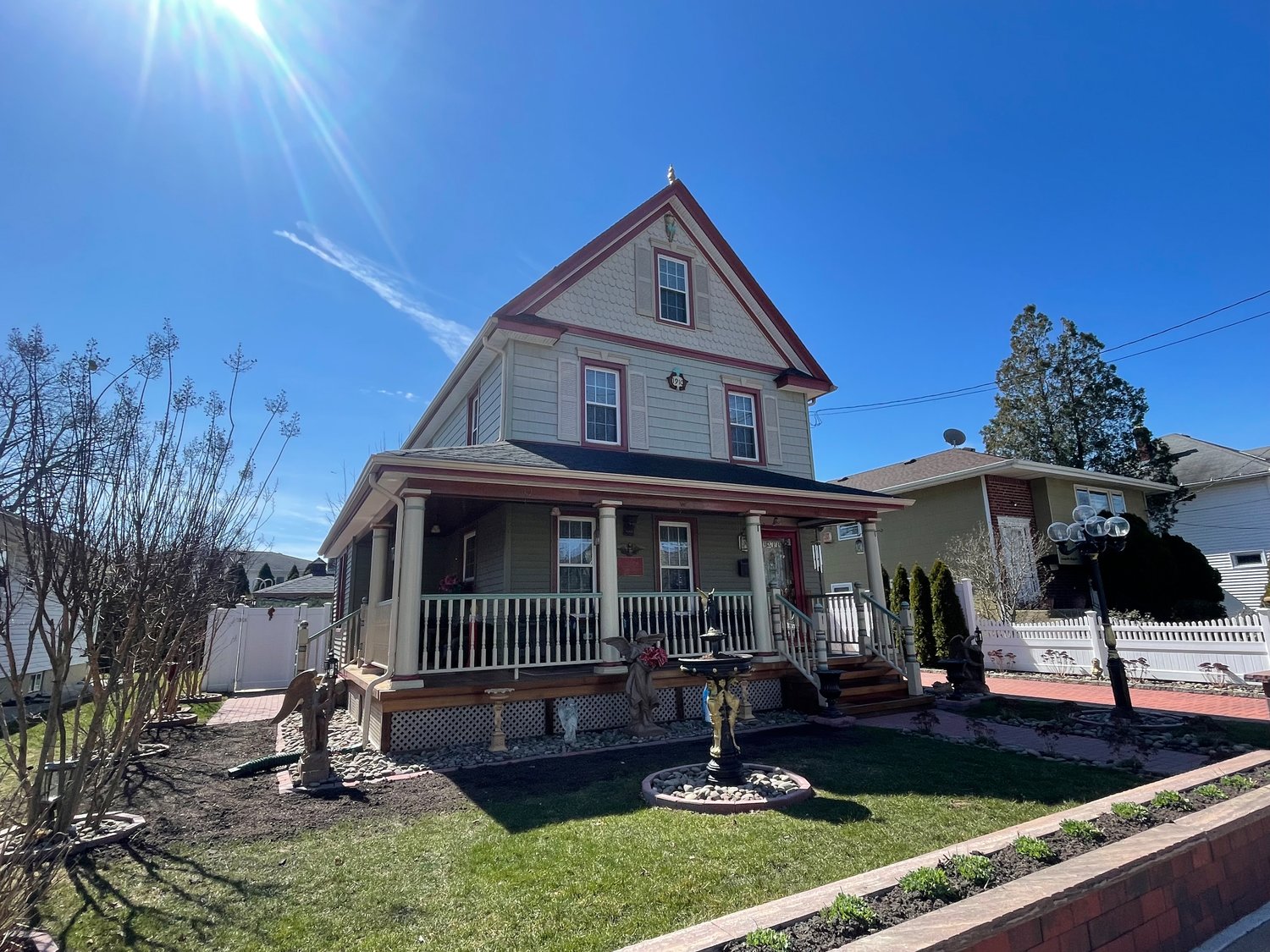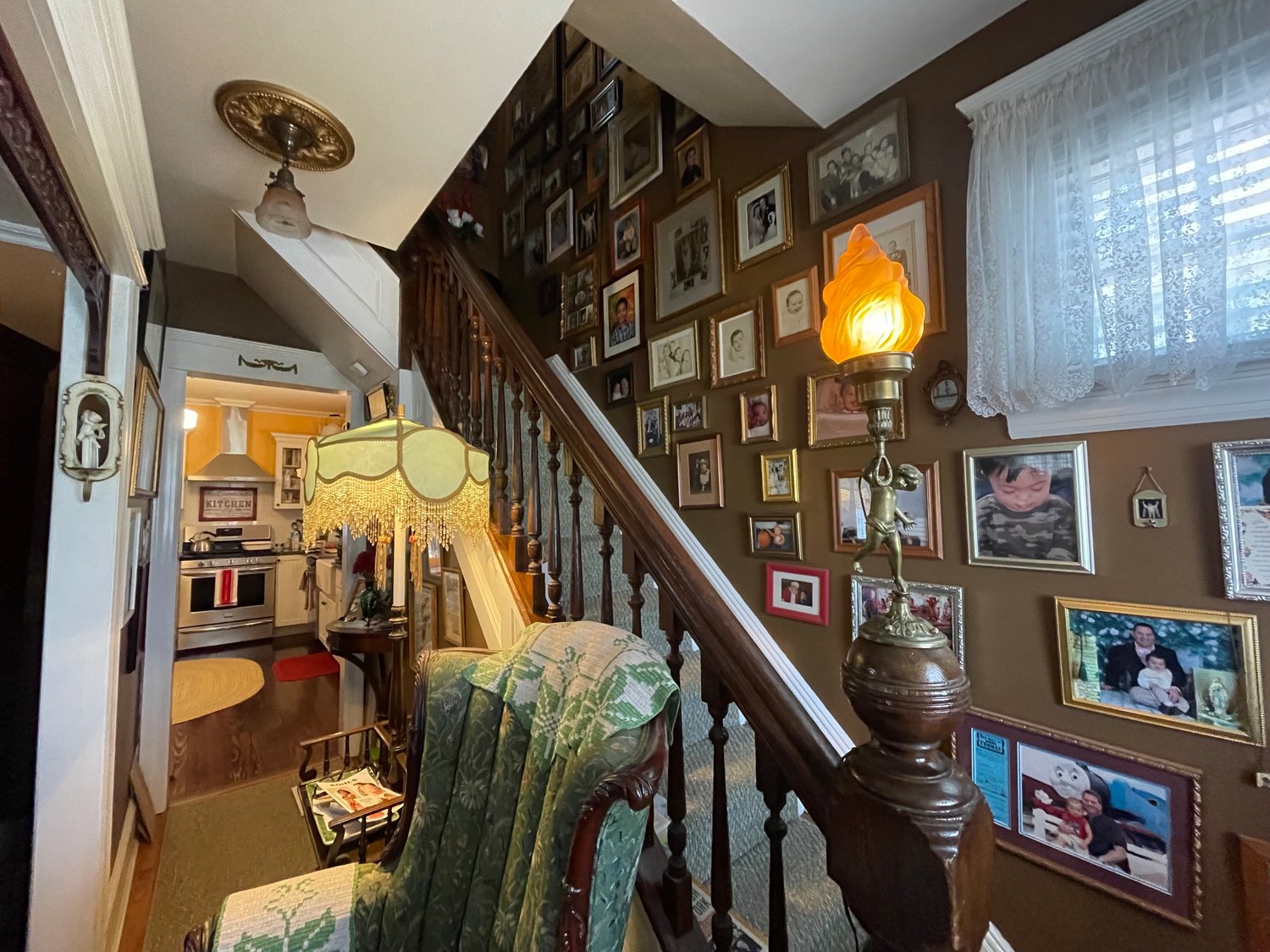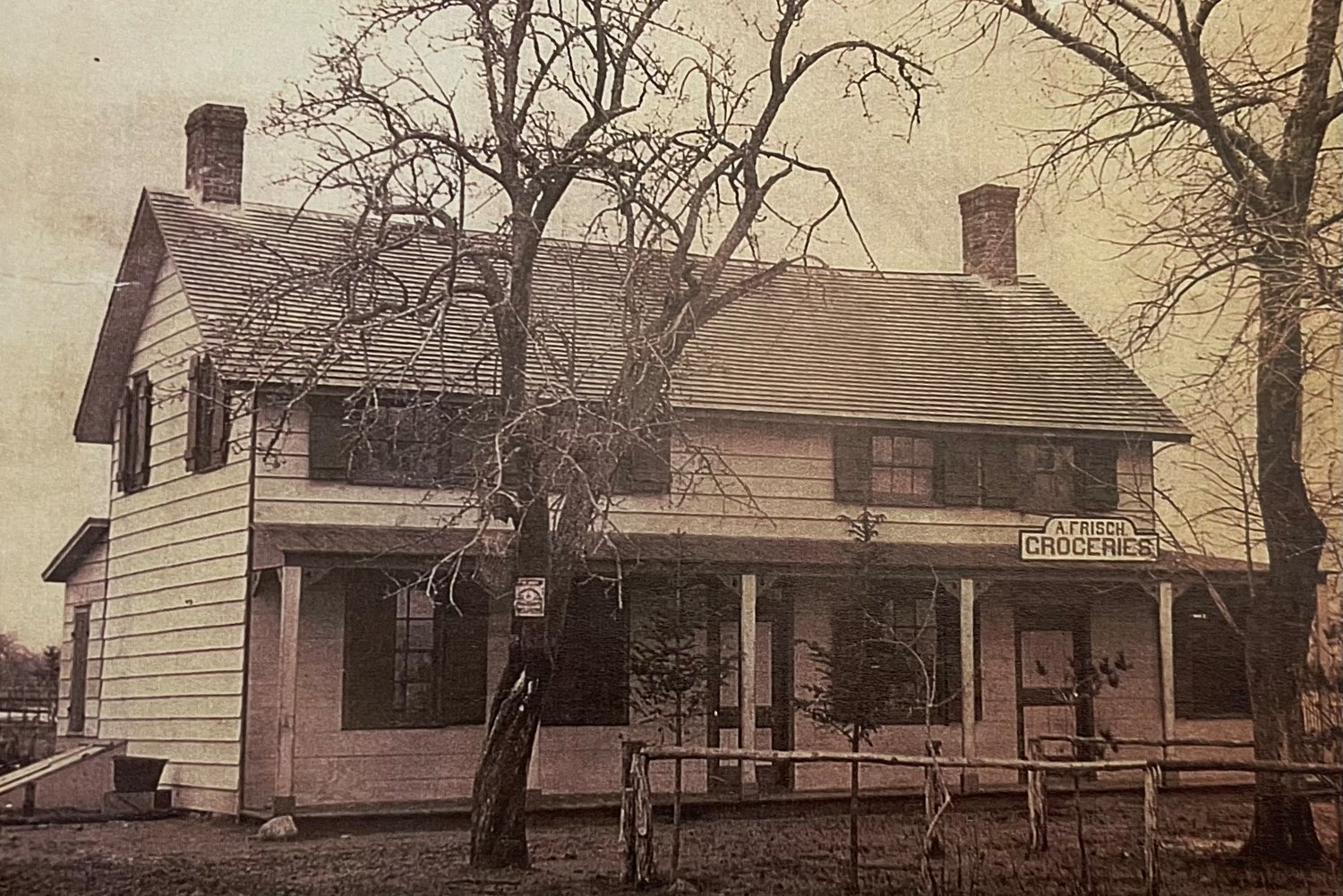Friday, April 19, 2024
 44.0°,
Mostly Cloudy
44.0°,
Mostly Cloudy
Charles A. Frisch House, one of Bellmore’s oldest, is now fully restored
Home owner Walter Eisenhardt ready to tell his story

The Charles A. Frisch House, on Martin Avenue in Bellmore, has come a long way since it was built more than 100 years ago, thanks to the restoration efforts of Walter Eisenhardt, who purchased the property in 2007.
When he bought it, the Victorian-era home was encased in 1970s décor, Eisenhardt recalled, including wood paneling and shag carpeting. The previous owners had covered up the home’s original fixtures and failed to see what Eisenhardt saw — “a real piece of history.”
“Even though this house was a complete mess and a wreck when I found it, pulling up and seeing it — I knew,” he said. “It had good bones. I knew it had to be one of the oldest houses in the community.”
Eisenhardt, who is originally from Queens, purchased the home and then spent the next several years restoring the Bellmore time capsule back to its former glory.
Stepping inside the front door is like stepping back in time — everything from the furniture to the pictures on the walls, while not original to the house, are historic, and reflect a Victorian style that Eisenhardt hoped to recapture.
In the 16 years he’s owned the home, modern amenities, such as electricity and televisions, have blended in with the structure’s original wood flooring, narrow staircases and small doorways.
More recent projects, Eisenhardt told the Herald, included the full restoration of the house’s wraparound porch and the renovation of its attic, which was converted into a bedroom.
Restoring the home wouldn’t have been possible without the help of Wantagh resident Doug Brooks, a “master craftsman,” Eisenhardt said.
“He’s just amazing,” Eisenhardt said of Brooks. “He takes such a passionate approach to doing it. He wanted it to look right historically.”
Eisenhardt is now creating a speakeasy in the home’s basement, modeling the space after the undercover bars that illegally sold alcohol during the Prohibition era of the 1920s.Once finished, it will even feature a secret doorway, as it would’ve 100 years ago.
Eisenhardt’s restoration efforts were not without setbacks. A former senior advertising executive for the New York Times, he successfully battled cancer, while raising his now 16-year-old son, Harrison, as a single parent. His illness prompted an early retirement, and in 2015, Eisenhardt stopped working to dedicate his time to raising his son.
Uncovering Bellmore’s history
As Eisenhardt began the extensive renovation process on his home, bits and pieces of information about its former owners became known. Charles A. Frisch built the home, and his family, who’s of German decent, played a significant role in the development of modern Bellmore.
Eisenhardt called the family “entrepreneurs,” having been successful land and business owners and operating a farm in Bellmore for much of its early history. In the 1800s, Bellmore was known as Newbridge, before adopting the name Smithville South. Today, Smithville South Hook Ladder & Engine Company No. 1 in the North Bellmore Fire Department still bares the town’s first, official name.
The post office opened in 1900 under the name Bellmore, and for about two decades, references to the town in newspapers called it by its current name and Smithville South, interchangeably. Eisenhardt believes Smithville South was dropped sometime in the 1920s, and the town officially was then known as Bellmore.
And while its somewhat of a legend, Eisenhardt said he does know of one explanation for the name Bellmore: An engineer on the Southside Railroad, which later became the Long Island Rail Road, had a girlfriend who lived in the area. As the train approached the station, he “rang the bell more,” to signal his arrival in town.
The Frisch family owned hotels, dry good stores, roadhouses and significant portions of land in Bellmore. Charles’ father, Adolf Frisch, is credited with establishing the area’s first school — Newbridge Road School. While the original wooden structure burned down in the early 1900s, the current school, built in 1924, still stands today.
In addition, before Robert Moses created Jones Beach in 1929, it was called High Hill Beach, and cottages near the shore, hotels and casinos were all owned by the Frisch family.
The town does pay homage to its earliest developers — just south of Jerusalem Avenue, Eisenhardt said, there’s a Frisch Place. Right across Newbridge Road, he added, is Charles Court.
Obtaining landmark status
Eisenhardt first applied to have the Frisch House landmarked in 2010, and for the next several years, completed extensive research to prove its historical significance to the Town of Hempstead. In 2014, it officially obtained landmark status, protecting and preserving the historic property.
The marker in front of Eisenhardt’s home reads: “The Frisch Family, of German decent, played a prominent role in the development of both the Bellmore community and High Hill Beach (now Jones Beach). The home is example of early 20th century residential architecture.”
For his efforts, Eisenhardt’s been asked to make his first formal presentation about the house and the restoration process next month at the Valley Stream Village Hall, as part of the Valley Stream Historical Society’s lecture series on historic places in Nassau County. His hope is the meeting will attract Bellmore residents, eager to learn about their town’s mostly hidden history.
“I’m proud of this house,” Eisenhardt said. “I’m proud of what it did to the block.”
Eisenhardt’s neighbor frequently commends him for his work, he added.
“He walks over to my house,” Eisenhardt said, “and any he chance he gets, he says, ‘Walter, you’ve lifted up the spirit of this town.’”
Eisenhardt’s presentation is set for April 19, at 7:30 p.m., at 123 S. Central Ave., Valley Stream. To see the historical site, the Frisch House is at 2668 Martin Ave., Bellmore.
HELP SUPPORT LOCAL JOURNALISM
The worldwide pandemic has threatened many of the businesses you rely on every day, but don’t let it take away your source for local news. Now more than ever, we need your help to ensure nothing but the best in hyperlocal community journalism comes straight to you. Consider supporting the Herald with a small donation. It can be a one-time, or a monthly contribution, to help ensure we’re here through this crisis. To donate or for more information, click here.
Sponsored content
Other items that may interest you











